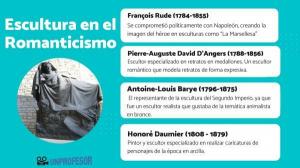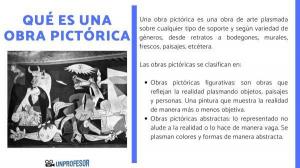The 5 most important WORKS of RAFAEL Sanzio
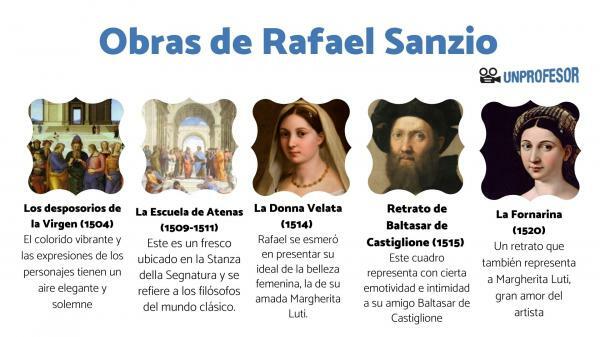
Raphael sanzio (1483-1520), also known as Rafael Urbino or Rafael, he is one of the most prominent Italian painters and architects of the Renaissance. In his short life, Rafael worked intensely, leaving a prolific work in which he recorded the ideals beauty of Renaissance Humanism, being together with Leonardo Da Vinci and Michelangelo, one of the masters of the movement.
In this lesson from unPROFESOR.com we offer you a selection of the most important works of Rafael Sanzio so you can appreciate the basic characteristics of the artistic work of this great Renaissance master.
Index
- Basic characteristics of the style of Rafael Sanzio
- The Marriage of the Virgin (1504)
- The School of Athens (1509-1511)
- La Donna Velata (1514)
- Portrait of Baltasar de Castiglione (1515)
- La Fornarina (1520)
Basic characteristics of the style of Rafael Sanzio.
Raphael he is one of the Renaissance painters most important in history. Before knowing his works, let's discover the characteristics of his style:
- Rafael was considered in his time as a a true prodigy at the beginning of his training and his career from his earliest childhood. From a very young age he began in the workshop of his father, also a painter, reaching in his adult life the direction of one of the great workshops of his time, in addition to having in his curriculum be one of the most prolific artists of Renaissance.
- His works are characterized by their serenity and harmony, being considered as splendid examples of the humanist impetus of their time, showing the human figure as the module and center of all things, emphasizing beauty.
- He dominated the High Renaissance art techniques As the sfumato, perspective, anatomical correction and the search to capture emotions and expressions, something to which his own style was added. A style of rich color, clarity and unforced compositions, natural and with a certain grandeur.
- He was a renaissance man being also an architect, engraver and draftsman.
- Rafael was also well known for his cordial, close and pleasant characterof him, being that same way of being the one that earned him numerous professional opportunities.
The Marriage of the Virgin (1504)
Among the main works of Rafael Sanzio stand out The marriages of the Virgin, 1504.
This is a painting located in the Pinacoteca de Brera, Milan, in which the marriage between Mary and Joseph just as he places the ring on her finger while the other suitors are disappointed. In the background, and like many Renaissance works, it includes an architecture, in this case in the style of the architect Bramante.
The vibrant coloring and character expressions have an elegant and solemn air, conferring a sacred air above a mere celebration. The work is also known as The Sposalizio, this work was commissioned by the Albizzini family for the Chapel of Saint Joseph in the Franciscan Church of Saint Francis of the Minorities in Città di Castello. The painting was inspired by a panel painted by Perugino, Raphael's first teacher, from The Marriage of the Blessed Virgin, and also in his famous fresco of Christ handing over the keys to Saint Peter. A work in which you can see the evolution of Rafael from the influence of the teacher Perugino to the creating your own style when it comes to composition, use of brighter colors, and perspective.
This is also one of his first works signed as a painter, at which point he has mastered techniques such as three-point perspective.
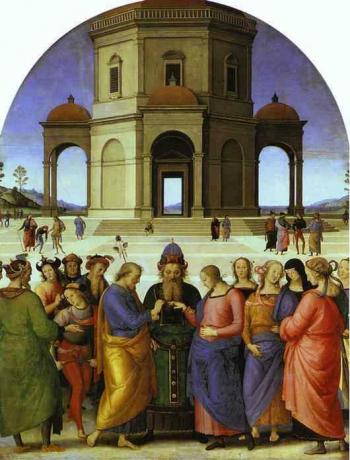
The School of Athens (1509-1511)
We continue to know the most important works of Rafael to talk about The School of Athens. This is a fresco located in the Stanza della Segnatura and refers to the philosophers of the classical world. Raphael brings together the most famous classical philosophers in a Renaissance building, possibly one of Bramante's designs for the new St. Peter's Basilica. The philosophers are recognizable by the iconography that has remained of each of them through the busts recovered from archaeological excavations.
Rafael shows us Plato (It is also thought to be a portrait of Leonardo as a tribute), to Aristotle in the center with his works Timeus and Ethics. They can also be identified Pythagoras in the foreground, Euclid on the right, Zoroaster holding the celestial sphere, Ptolemy holding the terrestrial sphere and Diogenes on the stairs holding a plate. It is also pointed out that the scholar who leans over Pythagoras is that of the Arab philosopher Averroes, who is credited with having brought the philosophy of Plato and Aristotle to the West.
It is also pointed out that Raphael included himself as the character with the black beret in the right corner, while the philosopher Heraclitus is said to be a portrait of Michelangelo.
The composition of him and the recreation the space in a theatrical way immerses the viewer in the debate or conversation of the protagonists of the work. The work received popular acclaim and was essential for receiving new commissions.
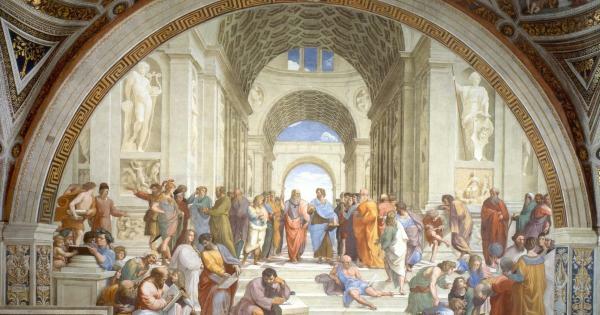
La Donna Velata (1514)
In this work, Rafael went out of his way to present his ideal of female beauty, that of his beloved Margherita Luti. Rafael represents Margherita in the style of his Madonnas, with clear and smooth skin, almond-shaped eyes and a perfectly modeled face. A work in which Rafael shows his mastery of Leonardo da Vinci's sfumato technique, creating a blurry and smoky fusion of colors.
Also embraces Leonardo's innovation of painting half-length portraits, which allowed Raphael to reproduce the beautiful fabric of the woman's dress. This work stands out for being the portrait of a real, identifiable person, not an objectified representation of beauty.
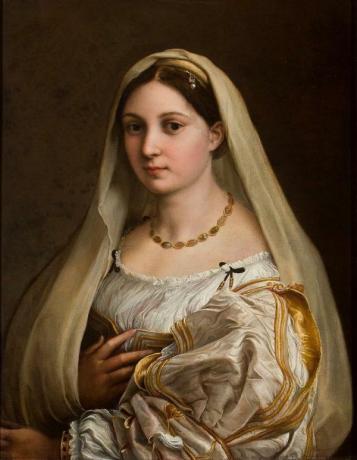
Portrait of Baltasar de Castiglione (1515)
This painting represents with certain emotionality and intimacy to their friend Baltasar of Castiglione (1478-1529), noble Italian courtier, diplomat and writer, author of The Courtier. Rafael portrays him with the aspect of a powerful but humble man, a cultured man dedicated to the ideals of Humanism, the philosophy of the time.
Rafael portrays Castiglione with a brown background that brings solemnity to the work, also offering us a more vulnerable aspect of the writer. With great cultural influence in the 16th century, it was the antithesis of Machiavelli's pragmatism.
The portrait offers us the sober elegance of Castiglione, with a composition that shows the model of three-quarter profile looking at the viewer, with a pyramidal composition that recalls the Mona Lisa of Leonardo. It is one of the most famous portraits of the Renaissance.

La Fornarina (1520)
This is another of the most important works of Rafael Sanzio. A portrait that also represents Margherita Luti, the artist's great love. She is a half body naked sitting looking at the viewer her with her dress unbuttoned, hiding her lower body, while her right hand touches her bare chest. She also wears a veil with which she tries to hide her torso, also wearing a turban. A sensual representation of Margherita, showing flawless skin, a radiant face, and a pose in the one who is looking beyond the viewer, smiling at someone beyond, possibly the painter.
The work has the Leonardo's influence on the pose of women. Rafael signed the painting on the arm, perhaps alluding to the fact that she was his love. In a recent restoration it appears that the woman was wearing a wedding ring, later erased, which suggests that Rafael had married in secret with Margherita, but due to her different social classes, and the fact that he was already engaged to María Bibbiena, he could not be public.

If you want to read more articles similar to Rafael Sanzio: most important works, we recommend that you enter our category of Story.
Bibliography
- Forcellino, A, (2008) Rafael: A happy life, Alianza Editorial
- Wirrkower, R, (2012) The young Rafael, Casimiro Ediciones

